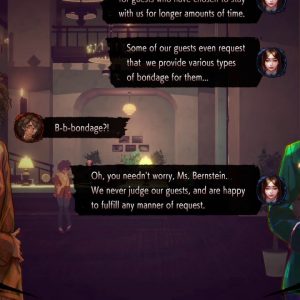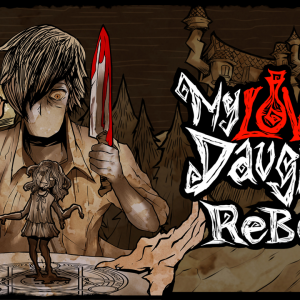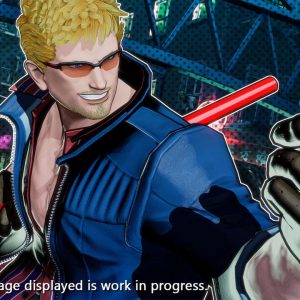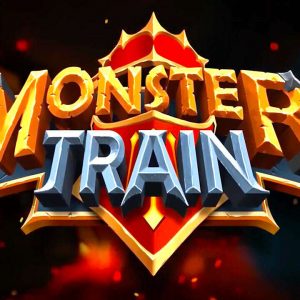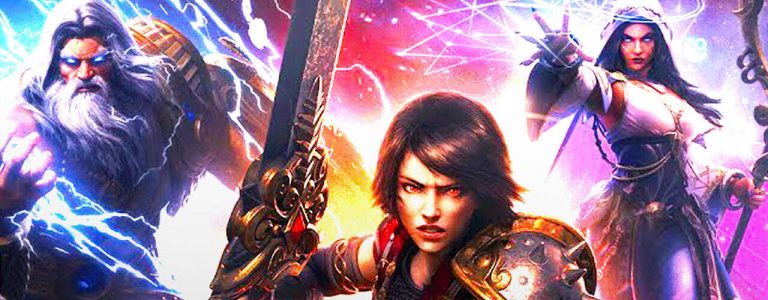An exciting take on the Monster Hunter formula, even if a lackluster story holds it back.
God Eater 3 is one of those cases where, thankfully, stellar gameplay makes up for a generic and boring story with bad writing. You might have to dig a bit to figure out how to do some of the coolest moves and learn to live with some between-battles inconveniences, but once you get the hang of it there’s nothing else like it – even the otherwise comparable Monster Hunter series. Sure, you can just button mash and get through most battles okay, but understanding the intricacies and nuances of how to chain together your explosive Burst Arts, soaring Dives, special attacks, and various combos to defeat inventively designed monsters is where the real thrill is at.
Structurally, God Eater 3 is a lot like Monster Hunter, and I mean that in the best way possible. You embark on missions to track down giant, dangerous beasts and kill them with oversized ridiculous weapons, then do that over and over again across a small variety of maps as you constantly seek to make better gear and incrementally increase your power. Plus, you can bring friends along if you want. But it’s also streamlined experience with faster combat, less focus on sometimes-tedious tracking, hunting, and trapping from its rival series, and the inclusion of NPC allies that can be customized to join you on every mission.
God Eater 3 marks a big shift for the franchise as its the first game designed for home consoles and PC rather than the PSP or Vita. Not only do character models look great, but because it’s built for a full-sized gamepad you have more control over your character than ever before, which is good because you now have more weapons to choose from, more types of enemies to fight, and more abilities to give you an edge in battle. The gameplay remains mostly unchanged, but there’s more meat on its bones.
“
The fundamentals are the same, but God Eater 3 just feels better than its predecessors thanks to a few small additions.
In God Eater 3 you take on the role of a powerful human with the ability to fuse parts of your body with Aragami, the monstrous beasts that plague the post-apocalyptic world, to wield massive, badass weapons called God Arcs. Having an in-game explanation for why the weaponry looks so ludicrous is clever, especially since these hybrid weapons are the only things that can kill Aragami.
While the general premise is a bit different – thankfully more original – relative to past games, the gist is all the same: you’re still mashing square and triangle to slash and smash enormous beasts or dodging out of the way of their attacks. It just feels better this time around thanks to a few small additions. For starters, the new dive attack lets you zoom through the air or across the ground to close distance on enemies after getting knocked back, or when initiating a combo. This helps keep the already-frantic combat moving at a rapid pace and can be used mid-attack to do things like stay in the air even longer or extend combos. That’s useful for the bigger Aragami because you’ll need to break parts of their body, such as tails, heads, and arms, to momentarily stun and weaken them. Once a part is broken, you’ll do more damage by attacking that segment.
God Eater 3 also introduces powerful new attacks called Burst Arts, which are similar to Blood Arts from God Eater 2: Rage Burst. Charging up and using your Burst Arts, and staying in Burst mode, is where a huge chunk of the fun and challenge comes from in God Eater 3. To enter Burst mode you must first “devour” an Aragami, which is a move that has your weapon literally open up a bloody mouth and take a bite out of the monster itself, charging your Burst meter. The animation is gory and satisfying, but I could have done without the quips from my character like, “Let’s take a bite!” From there, you can use one of three different Burst attacks (Ground, Air, or Step), all of which can be customized and upgraded over time.
To its credit, God Eater 3 didn’t take long to make me really feel like a hyper-charged hero in an anime about fighting giant monsters, and it only escalated from there. By the end of the approximately 25-hour main campaign I was hovering in the air performing extended combos without even touching the ground like something out of Devil May Cry and zipping around levels with shockwaves trickling out of my arms.
There are two new melee weapon types and a new ranged weapon type in God Eater 3, too. Biting Edge is a pair of giant daggers that are extremely fast and full of flair, while the flashy and versatile Crescent Moon – which became a favorite of mine – is a large, circular blade that can also morph into an axe. The new Ray ranged weapon is a bit odd, in that you toggle it on as a constantly pulsing laser rather than fire individual shots like the assault rifle, shotgun, or sniper types. I mostly used the shotgun or assault types for my ranged weapon since the Ray felt a bit too unwieldy.
Every quest in God Eater 3 is segmented by Ranks, similar to Monster Hunter. Each Rank represents a different tier of content which usually means higher difficulty but also the chance of finding better crafting blueprints and loot during missions. It’s a good system that’s clearly built around replaying stuff over and over, but don’t expect to see much level variety. Environments have a lot of personality in the backgrounds and locations, but ultimately they’re all just a bunch of corridors connecting open fields where you fight the Aragami.
Each mission is designated as either Story, which means it’s required to progress the plot and unlock higher ranks, or Optional, which means it’s purely for getting loot and blueprints. All of the loot drops are percentage-chance based, and the menu thoughtfully shows you exactly what potential rewards there are for every mission, including blueprints and items. That allows you to plan out which missions you’ll need to replay in order to farm the materials you need, without wasting time on things you don’t want. The real bulk of the content is after you finish the campaign, where you’ll be rewarded for spending time going through missions again with better loot.
“
There aren’t quite as many monsters here as you might hope, but their designs are diverse and creative.
God Eater 3 also introduces mini-raid-type missions called Assaults that are multiplayer-only and can pack as many as eight players into a single map together. Most other missions give you about 40 minutes to complete them, but Assaults have to be finished in about five minutes or less, putting a ton of pressure on speed and efficiency. It’s delightfully chaotic and full of action, but doesn’t really add much to make it feel like it’s capitalizing on getting that many people together. I would have liked to have seen larger and longer levels, like true raids that require lots of coordination, rather than shorter and more cramped speed runs.
Monster designs are fantastic across the board. There aren’t quite as many here as you might have hoped for, coming fresh off of Monster Hunter: World as many of us are, but designs are not bound by the constraints of trying to make things look like actual animals, increasing their diversity and creativity. In God Eater 3 you’ve got everything from lions to tank-bull hybrids to floating, godly cocoons that radiate energy and sound like a singing choir when they move. There are even giant bird creatures that can fly and zip across the battlefield like Falco, and their look and behaviors are all changed in later Ranks to create new versions that aren’t as repetitive to fight as up-leveled clones would be.
You’ll also have to contend with superpowered Ash Aragami who, just like you, can use devour attacks to take a bite and charge up into a powerful Burst mode. These attacks are strong enough to one-hit kill you if you’re not careful, which adds a lot of danger and strategy to fights. Most of the battles, even against the Ash Aragami, never extended beyond 10 minutes for me and generally, until Rank 5 and beyond, I was clearing missions in just five or six minutes, tops. At least, that was the case when I could take Phym, Claire, and Hugo with me — my preferred trio of NPCs. Claire and Phym are great at support and providing heals in a pinch.
You can get through each of the main Story missions, all told, in about 25 hours but, unfortunately, the melodramatic plot makes it a bit of a slog. None of the characters come across as genuine with their overly eager voice acting reading poorly written dialogue. Listening to characters I never cared about drone on and on about the drama between groups of bandits and outlaws never grabbed me. It was hard not to cringe each time the creepy little half-Aragami, half-human girl called me “Daddy.”
This issue is belabored even further in between missions because you’re forced to scour the entire base to find NPCs with chat bubbles over their heads waiting to talk to you. If there is a single NPC with an open conversation like that, you can’t begin the next mission. Having to sit through loading screens and poke through obtuse menus makes getting into God Eater 3 enough of a chore, but adding on a scavenger hunt for tedious exposition is just obnoxious. And to be honest, it’s a shame it’s tedious to sit through because there are some excellent cutscenes in God Eater 3 with beautiful anime-style animations full of action.
The Verdict
What God Eater 3 lacks in its story and varied content it more than makes up for with excellent pulse-pounding action, great enemy designs, and some of the most exciting combat this entire genre has seen to date. In between those battles are a lot of dull and mandatory NPC interactions, load screens, menus, and the unambitious world design, and short, simple eight-player raids leave a lot of room for improvement, but it’s a relief to see this series make the mostly successful jump from handhelds to consoles and PCs where it has the opportunity to grow in those areas.
